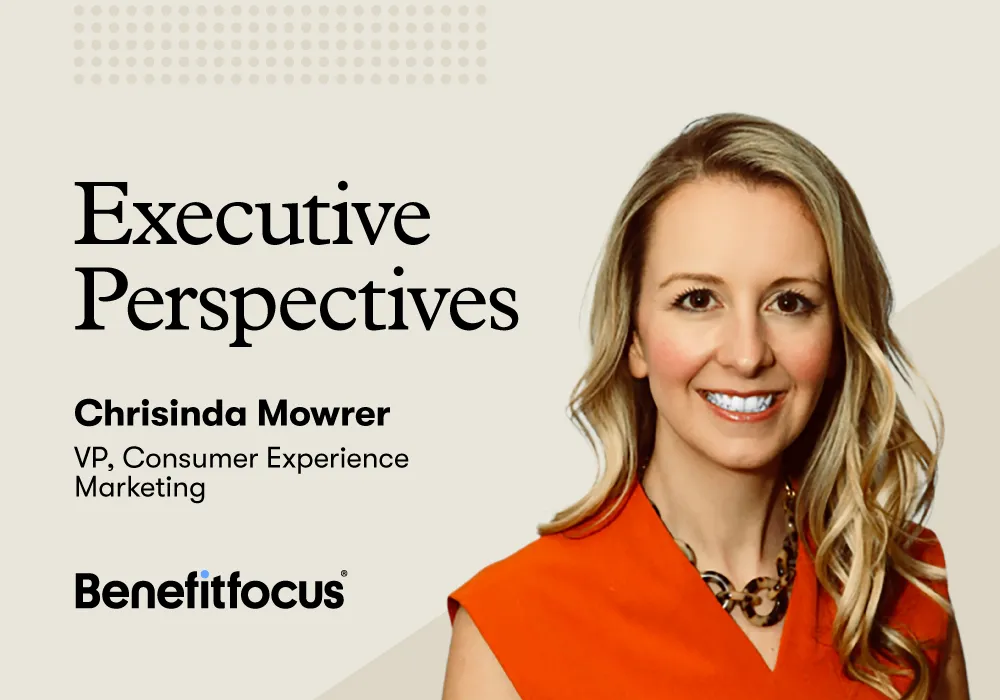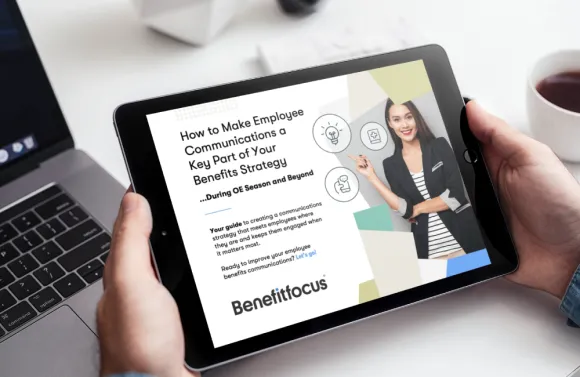
In this edition of Executive Perspectives, Chrisinda Mowrer, VP, Consumer Experience Marketing, shares her thoughts on our interconnected benefits landscape, radically simplifying the benefits experience and communicating with employees and members in more impactful ways.
Q: Considering the macro trends in the industry that are impacting employers, where do you think the industry is heading within the next five years?
A: We talk so often about the complexity of the market, but the landscape – health, financial, ancillary – is more interconnected than we’ve been treating it. I think we’ll see this show up in the way brokers provide guidance on benefits, employers choose benefits and how benefits are communicated to employees. At the end of the day, employees are spending a large amount of money – likely right behind rent or mortgage – on their benefits, so helping them maximize their value is extremely important.
Q: As a communications expert, how do you think this might change the way benefits leaders communicate with their people?
A: I think we will see the industry moving towards communicating in hyper-personalized ways across all the micro-moments. It must be different than it ever has been before. It’s no longer enough to send blanket communications.
Collectively – and I mean together as technology vendors, brokers and employers – we must give employees the right information at the right time, nudging them along with very specific messaging that is centered around the person – their life stage, finances, family situation and more. That way, they can make the best benefits choices. It takes responsibly utilizing data and technologies to allow for automation. It must be sustainable, but it also must be much more personalized than it is today.
Q: What are the challenges of communicating with employees so they can choose and use their benefits?
A: I feel for HR leaders and the complexity they face in their roles. They don’t have a lot of time leading up to open enrollment to think about communication while also making open enrollment happen. Many are juggling different vendors for each benefits offering – payroll, retirement plan, stop loss and more, and they may have 30+ vendors communicating directly with employees. I see these as big pain points for employers and brokers – and how a communication strategy can easily fall to the bottom of the list.
That’s why we are stepping in to offer comprehensive communications support to our customers. The intent is to create a connected communication plan and strategy that aligns with how the organization wants to communicate with its employees. We want to provide an opportunity to stand alongside them, helping them develop a clear plan for open enrollment and year-round that we can help them execute.
Q: What issues are keeping employers or benefit leaders up at night?
A: First, everyone is concerned about health care costs and their impact on affordability. When costs go up for employers, it impacts their benefits choices and how they offer benefits to their employees. It trickles down into employee costs, potentially impacting them not having adequate health care. Plus, we know that medical expenses are one of the main reasons people are borrowing against their retirement plans and the highest reason for bankruptcy.
Consider, too, the stress on employers and the HR team with a workplace made up of five generations of employees: Gen Z, millennials, Gen Xers, boomers and a bit of the silent generation. They’re questioning how to communicate effectively to this diverse employee base and guide employees at different life stages to the right groupings and sets of products. It becomes harder, for instance, when a subset like Gen Z requires more attention from HR due to the complexity of the benefits landscape.
Q: How can employers best demonstrate the value of their benefits package to employees – and health plans to members?
A: There’s no silver bullet. What it comes back to is having a strong communication plan and keeping messages simple and in plain language.
There is an opportunity for a future state that radically simplifies how we help our employees and members use benefits. Think about some of the brands we engage with daily through technology experiences, whether we’re shopping, working out or streaming entertainment. The common thread is that they provide value by making things that used to be more difficult a lot easier by simplifying the experience.
An employer could bring a simplified employee benefits experience by providing a single place for employees to choose their benefits and access them throughout the year. What if it was all in the palm of your hand? Your health care card, dental card, copay, in network doctor lists and more live in one digital experience. The difference then is that employees will then know what is available to them and how best to use their benefits. That’s evolution.
Q: What does the future of workplace benefits look like?
A: It’s more connected and radically simplified. But I also think the future is one where data allows us to expand how we think about serving employee populations. It’s one where more employers can use their benefits data in partnership with their technology providers to deliver guidance that helps employees choose what’s best for them.
We can also bring additional value to the employer and broker. That’s where we are headed, getting stronger with data insights, and looking at them holistically to say this benefit is underutilized or this audience is underserved.

